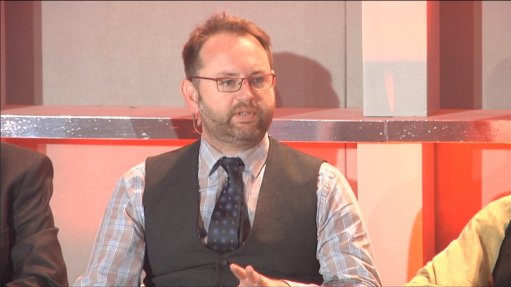
The future of manufacturing in South Africa lay in the country’s ability to become a stable business destination, globally competitive and beneficiate locally produced products, said Manufacturing Circle executive director Coenraad Bezuidenhoudt at multinational electronics company Siemens’ Future of Manufacturing Conference, in Boksburg, last month.
Delivering a keynote address, Bezuidenhoudt highlighted how these three aspects would allow for manufacturing to be among the top three economic drivers in South Africa, alongside agriculture and mining.
“Manufacturers want South Africa to grow a dynamic manufacturing industry that will offer a business environment that attracts investments and nurtures existing manufacturing companies,” he pointed out.
Bezuidenhoudt added that this resulted in the need to review macro policies – including bulk infrastructure pertaining to the reliability of water and electricity supply that allows for manufacturing to take place – on how they affect the manufacturing industry holistically.
Further, set prices that affect the economy, such as electricity tariffs and petrol prices, also form part of the macro policies that need to be reviewed to enable the manufacturing sector to work efficiently and affect the economy positively.
As this is a national challenge, research and strategy advisory firm Frontier Advisory CEO Martyn Davies indicated that government should play an enablement role and not an intervention role in these challenges.
He pointed out that such challenges, such as water and electricity supply, are essential to the daily functioning of manufacturing companies and factories. Government’s tabling of policies and prices that are feasible to such industries would help the manufacturing sector grow, he added.
“Given these challenges, there is a need for industry to start thinking creatively and effectively about institution changes that need to take place to make South Africa function better as a manufacturing destination,” Bezuidenhoudt stated.
Referring to industry strikes that took place in the first half of this year, he indicated that the collective bargaining system did not work and needed to be changed, and that more leeway had to be given to other methods that were successful in some areas of industry, such as central bargaining.
“The National Economic Development and Labour Council must either be reformed or chucked out, as we have seen that it is not working for us,” he stressed.
Commenting on policy challenges, South Africa’s Technology Innovation Centre group executive Pontsho Maruping stated at the conference that drawing on one vision was essential for growth in the manufacturing sector.
She pointed out that, with several policies being in effect, such as the industrial procurement action plan, all stakeholders from government and the private sector needed to share a common vision in these policies to yield positive results for manufacturing.
Also, to remain competitive, better access into Africa through creating a fair trade environment was needed, said Bezuidenhoudt, noting that it was projected that about 800-million people in Africa would urbanise in the next ten years, which required South Africa to become a competitive gateway into the rest of Africa.
However, for this to become a reality, he pointed out that South Africa had to be known for its innovation and ability to beneficiate competitively, as this would ensure that locally produced goods were preferred locally and recognised globally.
Reiterating the need for global competitiveness, Siemens VP Raymond Padayachee mentioned during the conference that education remained key in driving global competitiveness.